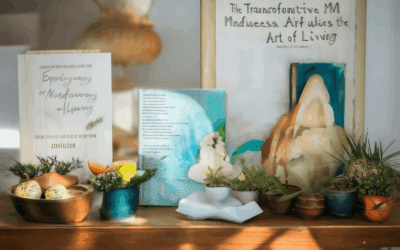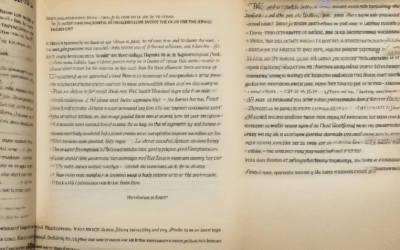Exploring the intricacies of personal change is a journey that often begins with introspection and self-discovery. For many, writing about their life-changing experiences serves as a powerful medium to reflect on their growth, articulate their struggles, and share lessons learned. This guide delves into the art of crafting compelling narratives that resonate deeply, offering practical tips and real-life examples to help you navigate the complexities of personal transformation. Whether you’re aiming to document your own journey or inspire others, understanding how to effectively communicate your story is key to fostering meaningful connections and sparking lasting change. By examining the nuances of personal growth goals and the strategies behind achieving them, this guide equips you with the tools to craft a narrative that not only reflects your journey but also resonates with those who may be embarking on their own paths. From overcoming writing challenges to leveraging storytelling techniques, this comprehensive resource empowers you to explore the depths of your personal change and share your insights with the world.

How to Write an Essay About a Life-Changing Experience
Writing an essay about a life-changing experience can be a deeply personal and rewarding process. It allows you to reflect on your journey, uncover lessons learned, and share your growth with others. Here’s a step-by-step guide to crafting a compelling essay:
1. Choose Your Focus
Select a specific life-changing event that had a profound impact on you. Whether it’s a career shift, a move, a relationship change, or a personal realization, the event should be significant enough to warrant attention.
2. Outline Your Structure
Organize your essay with a clear structure to guide readers through your narrative. A typical structure includes:
- Introduction
- Background Information
- The Life-Changing Event
- Impact on Your Life
- Aftermath and Reflection
- Conclusion
3. Reflect on Your Journey
Consider how the event transformed your life. Discuss specific changes in your goals, relationships, or lifestyle. Reflect on how it influenced your decisions and approach to life moving forward.
4. Include Relevant Background Information
Provide context to help readers understand the event. Describe the setting, circumstances, or broader implications of the event. This adds depth and helps readers relate to your experience.
5. Share Emotional and Personal Insights
Convey the emotional weight of the event. Describe your feelings during and after the experience. Authenticity will make your essay resonate more with readers.
6. Show How You Moved Forward
Explain how you adapted to the changes. Discuss any new habits, hobbies, or perspectives that emerged as a result of the event. Highlight your resilience and growth.
7. Conclude with Key Takeaways
Summarize the importance of the event in your life. Reflect on what you’ve learned and how it has contributed to your personal growth. Optionally, link to Peter Spirito’s website for further storytelling inspiration.
8. Edit and Proofread
Review your essay for clarity, grammar, and coherence. Ensure it flows smoothly and effectively communicates your transformation.
By following these steps, you’ll create a heartfelt and engaging essay that captures the essence of your life-changing experience. Remember to keep it personal and authentic, allowing readers to connect with your journey on a deeper level.
For more tips on storytelling and personal reflection, visit Peter Spirito and explore their collection of meaningful essays and insights.
Writing About My Personal Growth
Personal growth is a journey that encompasses various aspects of my life, from professional achievements to emotional development. Reflecting on my journey, I’ve learned valuable lessons that have shaped who I am today.
Setting Goals
I recall a significant moment when I set a professional goal to advance in my career. This goal required dedication, hard work, and adaptability. Through persistent effort, I achieved it, which taught me the importance of goal-setting and resilience. This experience highlighted that growth often lies in pushing beyond comfort zones.
Overcoming Challenges
One of my greatest challenges was mastering a new skill in a project at work. Initially, I felt overwhelmed, but by breaking it down and seeking support, I gradually improved. This process taught me the value of perseverance and the benefits of seeking help when needed.
Impact on Relationships
My personal growth has also influenced my relationships. I’ve become more mindful of my interactions, leading to stronger connections with others. This shift has made me more empathetic and attuned to others’ needs, enriching my social life.
Lessons Learned
Reflecting on these experiences, I’ve realized that growth is not linear. It involves both triumphs and setbacks, each contributing to my development. This understanding has made me more compassionate toward myself during challenging times.
In conclusion, writing about my personal growth allows me to celebrate my evolution while acknowledging the ongoing journey. It’s a narrative of continuous learning and self-improvement, shaping my present and future endeavors.

How to Write a Story About Change
To craft an engaging and impactful story about change, follow these structured steps:
- Define Your Purpose
- Develop a Strong Hook
- Create Compelling Characters
- Build the World
- Pace the Narrative
- Introduce Conflict and Tension
- Reach the Climax
- Resolve the Story
- Reflect on Themes
- Seek Inspiration
- Add Symbolism or Metaphor
- Edit and Refine
Clarify why you’re writing the story. Are you aiming to inspire, share a personal journey, or educate on the effects of change?
Begin with a captivating scene or present a problem that necessitates change, grabbing the reader’s attention early.
Introduce relatable characters who undergo the change. Depict their emotions—fear, excitement, doubt—to foster connection.
Set the scene with descriptive details, whether it’s a specific location or a broader societal context, to immerse the reader.
Progress the story methodically, illustrating both the challenges and triumphs along the path of change without rushing the process.
Highlight obstacles—both internal and external—that hinder progress, adding depth and engagement to the narrative.
Present the pivotal moment when change occurs, whether through a sudden insight or a series of incremental steps.
Conclude with a satisfying outcome, showcasing the character’s growth and the lasting impact of the change.
Ensure the story conveys a central theme about resilience, courage, or embracing the unknown, tying it seamlessly into the plot.
Research successful stories on change to borrow techniques and ideas, enriching your own narrative with fresh perspectives.
Use symbolic elements or metaphors to represent the change process, enhancing the story’s layers of meaning.
Revise your draft to polish language, ensure coherence, and eliminate plot holes, seeking feedback for refinement.
This structured approach ensures a compelling and thought-provoking story about change, resonating deeply with readers.

Examples of Personal Writing
Personal writing encompasses a wide range of expressive forms that allow individuals to share their thoughts, experiences, and emotions. Here are some common types of personal writing and examples:
- Personal Essays : These are introspective pieces where writers reflect on their lives, beliefs, or experiences. Examples include:
- Memoirs and Autobiographies : These works recount the author’s life experiences. Examples include:
- “Educated” by Tara Westover, a memoir about her journey overcoming poverty and abuse through education.
- “The Glass Castle” by Jeannette Walls, a story of resilience and family dysfunction.
- Personal Letters and Emails : These are private communications that share thoughts, feelings, and news. Examples include:
- A heartfelt letter from a soldier to their family during deployment, expressing love and missing home.
- An email from a friend sharing exciting career news and offering to meet up.
- Personal Journals and Diaries : These are daily recordings of thoughts and experiences. Examples include:
- A teenager documenting their high school experiences in a diary, capturing moments of adolescence.
- A professional keeping a work journal to track progress on a major project.
- Personal Blogs and Vlogs : These platforms allow individuals to regularly share their thoughts and life updates. Examples include:
- Peter Spirito ‘s blog, where he discusses personal growth, creativity, and everyday adventures.
- A vlog channel where a YouTuber shares weekly updates about their personal projects and challenges.
- Personal Poetry and Prose : These are artistic expressions of personal emotion and experience. Examples include:
- A poem written about a lost loved one, capturing memories and emotions.
- A short prose piece describing a meaningful travel experience.
- Resumes and CVs : While often seen as professional documents, they can also tell a personal story of career journey. Examples include:
- A resume highlighting a person’s transition from corporate life to entrepreneurship, showcasing their personal growth.
- A CV detailing a freelancer’s diverse projects and skills, reflecting their unique career path.
- Speeches and Toasts : These public expressions often convey personal sentiments. Examples include:
- A wedding toast where the speaker reflects on the couple’s journey together.
- A graduation speech encouraging classmates to pursue their passions.
How to Start Off a Personal Statement
A personal statement serves as a concise introduction, often found in resumes, bios, or letters, intended to capture your unique background and contributions. Here’s a structured approach to crafting an effective opening:
- Introduction:** Introduce yourself beyond your name. Mention early influences or significant life events that have shaped your identity and passions.
- Background:** Briefly describe your early life, highlighting formative experiences that contributed to your growth and development.
- Skills and Experiences:** Articulate your skills and experiences, weaving them into a narrative that showcases your journey and achievements.
- Awards and Recognitions:** Include notable accolades or recognitions, tying them into your narrative of accomplishments.
- Conclusion:** End with a forward-looking statement, expressing enthusiasm for future opportunities and commitments.
Key considerations include maintaining a professional yet personal tone, using active verbs, and avoiding excessive detail. Ensure each paragraph flows logically, capturing attention while conveying your unique story effectively.

How to Begin a Personal Essay
To craft an engaging opening for your personal essay, consider the following structured approach:
- Engage with a Thought-Provoking Question or Statement : Begin with a question or intriguing statement that piques curiosity and encourages reflection. For instance, “Have you ever wondered the significance of a single moment in your life?”
- Set the Scene with Vivid Description : Paint a vivid picture with sensory details, allowing readers to connect emotionally. For example, “One crisp morning, I stumbled upon an old journal hidden in my attic.”
- Introduce the Central Theme or Conflict : Subtly hint at the underlying theme or challenge you’ll explore. Whether it’s a journey, a lesson, or a story, this sets the stage for your narrative.
- Conclude with a Thesis Statement : Summarize your main idea in a way that invites exploration. For example, “This journey through my journal reveals lessons that shaped who I am today.”
By blending these elements, your essay begins with intrigue, relatability, and thematic depth, guiding readers into a meaningful exploration.




0 Comments